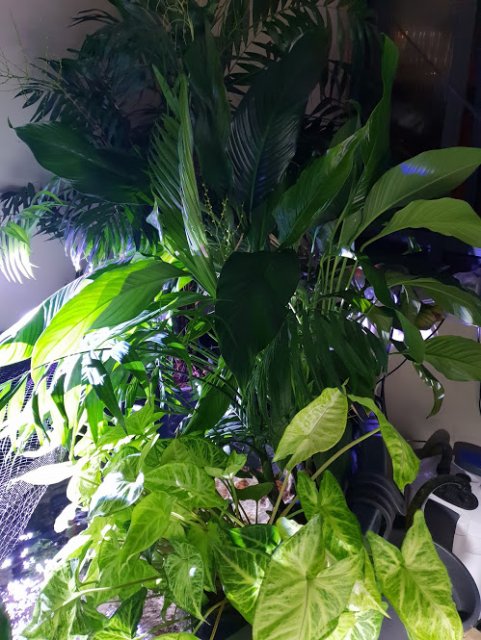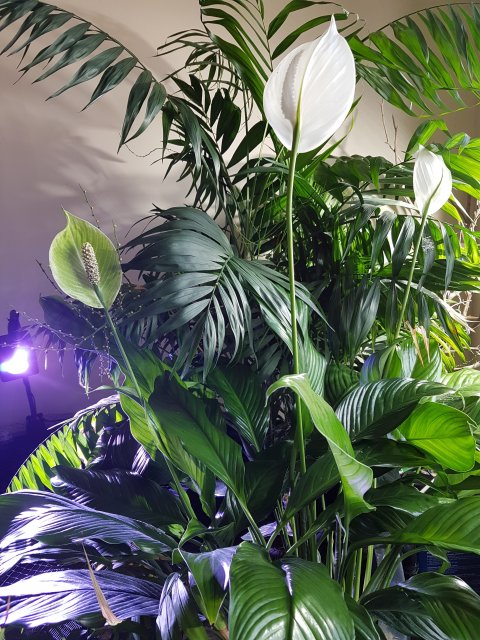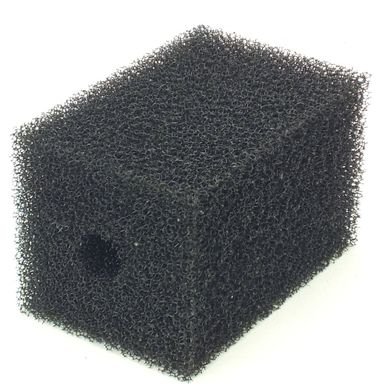Hello mate. you sound like a absolute scientist thanks for this response! Nitrate in the thousands Jesus Christ it sounds scary. So keep filter sponges clear of getting clogged up is that correct? at all times a good idea would be to go into both canisters every 4 weeks and rince in tank water would you agree?
Keep surface agitation at a maximum when I'm not in the living room so push fx6 outlets higher so it's louder and makes more surface agitation is that what you mean. I work most of the day and I sleep as well. So I could do that for about 16 hours of the day.
I do have a TDS tester that's not a problem but I'm currently using the KH tester to get the KH up to 10 but I'm doing that from a product all in one I would rather use Epsom salt and bicarbonate of soda. My whole thing is that what I have learnt is the no3 you might as well keep that at a low low if you can. Also my dolphins do not breed and let it slow the peacocks in the other tank and the Yellow labs in this tank have been but the dolphins stopped .
Yes and overstocking is silly that probably contributed to the rising bioload. Even though I have dual fx6. When you say use a pre filter sponge could you please explain I have obviously filters in the fx6 is the standard ones. I did purchase these blue circle things which are not too fine and they can trap stuff in however I remove them lately because the standard fx6 Media seems to do the job. And those do seem to get clocked a lot faster. Now with plants that's a very interesting subject I wanted to cover another time I have no idea about plants and I hear that cichlids will eat them however I would love to know which ones to install and how to do it because I'm aware that they will be eating the no3.
I was thinking of installing a dripping irrigation system going through and Ro then threw a calcium vessel. And then the exit point through a barrel containing the support system with plants what do you think about that it's going to cost me a few quid but if they could replenish 50l of days of water that would be awesome. But that's in the longer run I would love to learn about plants in the actual aquarium if possible and which plants.
Anyhow considering what you're saying you're saying even if the tap comes out at 25 which it is now and the no3 grows over the weeks and weeks into the actual thousands that this is actually not toxic for fish but what's important is doing regular filter rinsing out with tank water regular water changes as if you don't do that then they can turn into and O2 and kill your fish. And you're saying it's likely that's what happened. So technically you're saying I should use tap water because it will have the correct water parameters and I don't need to worry about re buffering also this oxygen issue that you mentioned. The tap water contains phosphate which are very high that cant remove and that does make algae grow also that RO water will strip everything my common sense mind is telling me this is a better option to go for. It will take away any iron traces as well and surely it must be a good thing if I bring in 0 nitrate into the tank rather than 25?
Thanks for the Post looking forward to hearing a bit more from you

I'll address the points from top to bottom of your post.
I am not a chemist, neither am I a scientist. I am a financial mathematician of some sort

and a hobbyist who reads a lot and implements what they read about, so what I am advising is based on trial, error and success. It is up to oneself to decide what to do but like to share what has worked very well and I explain where I am coming from.
Yes, filters should be as spotless as possible technically. You should not use them as siphons for detritus! Clean any detritus accumulating in the tank itself at water changes with your normal siphon.
Pre-filers I use are just a block of black medium density sponge with a hole cut in the middle so I can "dress up" the intake. These I wash regularly every week under a running tap water. They do not obstruct the flow at all. I love sponges so much, that most of my media inside the external filters is sponges of different densities.
Yes, keep the surface moving as much as possible. Oxygen is very difficult to dissolve in water and it is almost impossible to have a still water oxygenated tank without plants. Bigger tanks have bigger surface area which helps as well. My tanks are not in my bedroom or sitting room so it is noisy

Soda bicarbonate will raise your KH. You don't need a 10, any readable level will keep the tank stable. How much you need between water changes depends on how heavy a tank is stocked as KH is used up during nitrification. When it drops to zero, the pH dips down, fish are gasping at the surface or are behaving sickly and develop diseases..
Espom Salts is Magnesium sulfate. You also need a source of calcium. If you have plants, you'd need all macro and micro elements....hence tap water is always the easiest choice....
Macro elements are ammonia, nitrite and nitrate, plenty of them in a tank. Micro elements are iron, copper, magnesium, calcium, etc...Macro means the plants need them in macro quantities

How convenient for us fish keeping folks

Plants have a preference for ammonia, after that nitrites and least for nitrates. So they reduce nitrification, a majorly oxygen demanding process, by taking up ammonia directly. It's a win win situation with plants. I personally would never ever keep a tank without plants long term if I care about my fish's long term well being.
The easiest and most efficient way to incorporate plants is emersed, only with their roots in the water column. This is because they have access to aerial CO2, which is a major limitation for submerged plants and makes them significantly less efficient unless one injects CO2 directly in the water column. I'll attach a picture at the bottom of my tank of my emersed plants. They're planted in hydroton clay pebbles, in hanging baskets, easy stuff to do really..
And yes, what I am saying is that using tap water is the better option in my personal opinion because it has all one needs in most cases and it is stable, unless one has very soft water, a nightmare if one doesn't understand the dangers

If you incorporate plants into your setup, those plants will love your extra nitrate and phosphate in the tap water. Algae is not a bad thing in an unplanted tank by the way. It takes up the same nitrogen compounds as plants which I called "macro" nutrients above.
The nitrate in your tap is not a product of nitrification which is a major point. Nitrification is an exhausting process which uses a mass amount of oxygen. It is the low oxygen that becomes the issue. Another contributing factor to anaerobic and anoxic zones around the tank is having deep substrate which is also unplanted, plus dirty substrate and of course the major issue with dirty filters which I explained above. Most people don't realize the danger of using filters as siphons. The accumulated detritus in the filters would result in the wrong type of micro-fauna in the filters....sick fish....










